Introduction
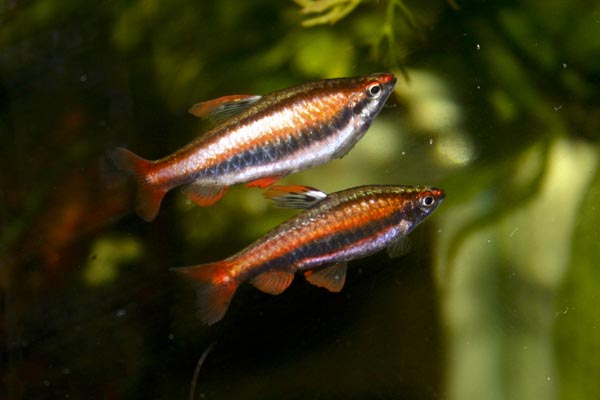
Nannostomus mortenthaleri, known as the coral red pencilfish is a recent, and very welcome addition to the hobby. It was described by Paepke and Arendt in 2001 as N. marginatus mortenthaleri in honour of Mr Martin Mortenthaler, an Austrian fish exporter. It was promoted to full species rank by Weizmann et. al. in 2003. It is still much sought after and remains an expensive fish to buy.
Distribution and Availability
The coral red pencilfish is found only in a restricted and rather isolated area of Peru – in parts of The Rio Nanay, a blackwater river. Here it lives in forest streams and tributaries amongst sunken roots and leaves. The difficulty experienced in collecting this species along with the rather few records of successful breeding in the hobby mean it remains a fish for the connoisseur. Has been imported in small numbers and can be obtained, for a price, at the better shops.
Description
Rather large (up 3.5cm) and robust for a pencilfish it has a brown upper body fading to white on the sides. Two horizontal dark bands stretch from the eyes to the caudal fin and a third stripe runs along the belly. The unpaired fins have a variable amount of red on them. Depending on the condition and mood of the fish the pale parts of the body will turn red. In displaying males the entire body turns an astonishing deep vermilion. The top part of the eye is deep red. The adipose fin is absent.
Males – white flash on dorsal, anal fin entirely red.
Females – no white flash on dorsal fin, anal fin broader than the male with a clear border.
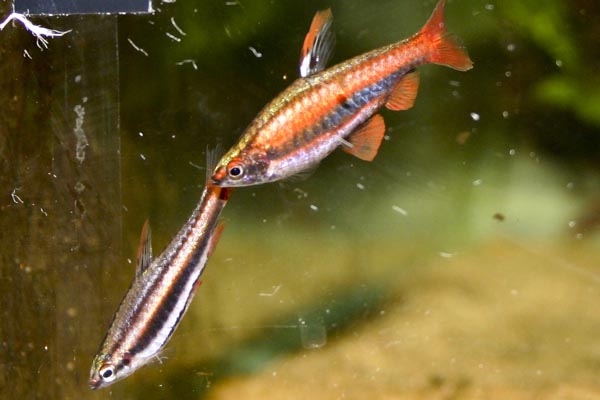
There is a very similar species that entered the hobby around the same time – Nannostomus rubrocaudatus sometimes called the purple dwarf pencilfish. This fish has a red rather than a white belly, lacks the dorsal flash and has less red towards the front of the fish.
Requirements
A difficult fish to care for and not suited to those with little experience. Intraspecific aggression is marked and males frequently fight, occasionally to the death. Males will also drive females to exhaustion. A large tank with a large shoal of fish can work well but, given these fish cost so much is obviously outwith the reach of most hobbyists. I separated the males, bringing them together only to spawn.
- Tank size: 90cm minimum for a shoal ( 6 fish at least with more females than males) although small tanks are best for breeding.
- Decoration: fine-leaved and floating plants. Make sure there are many hiding places.
- Temperature: 25 – 29oC
- pH: 5 – 7.0
- Hardness: requires soft water, 2 – 8odH
Feeding
Flakes will be eaten but this species requires live food if it is to kept long-term. The generic name means “small mouth” and it is unable to eat large food. Newly hatched brine shrimp, daphnia, Grindal worm and frozen bloodworm are all greedily eaten though.
Breeding
These fish are actually fairly straightforward to breed once they are in good condition and the aggressive nature of the males is allowed for.
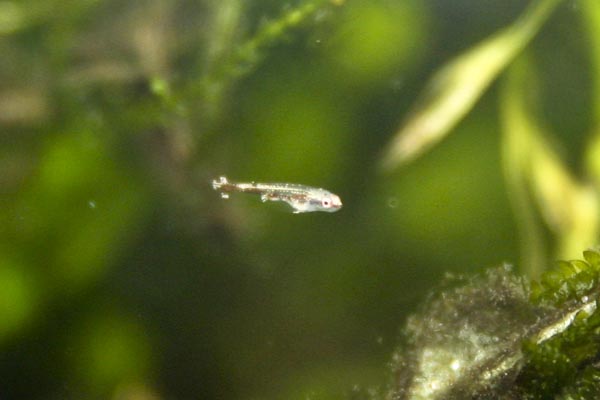
Place two or three well conditioned pairs into a small tank with a large amount of spawning medium. Java moss with Java fern mixed in is ideal but artificial media such as bunched nylon ribbons can also be used. Keep an eye on the fish and if the aggression becomes too much you will need to separate them. However if they are in the mood to spawn the males will display to each other but will spend most of their time looking for females. Over the next few days the fish will spawn each day and can be removed after a week or so.
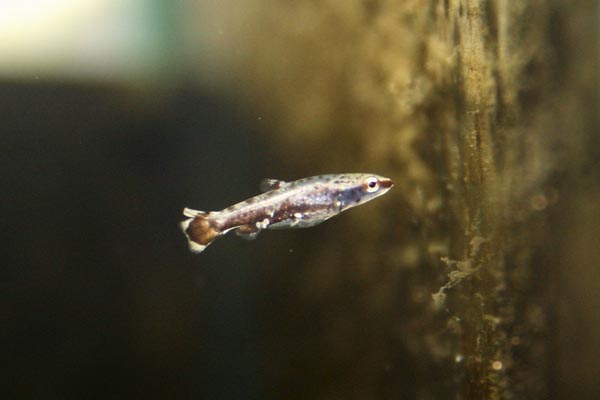
If everything goes to plan the fry will start to appear about a week after the parents are removed. In some cases where adults have been left for longer some fry will be found along with the parents. The fry are quite small and require small live foods to start. Infusoria and paramecium are ideal to begin with but quite quickly they will eat vinegar eels and newly hatched brine shrimp. After a slow start the young pencilfish grow quite quickly and a characteristic notch on the upper caudal fin can be observed. Young fish of this genus have a rather snake-like swimming motion which helps to keep them camouflaged in their natural habitat.
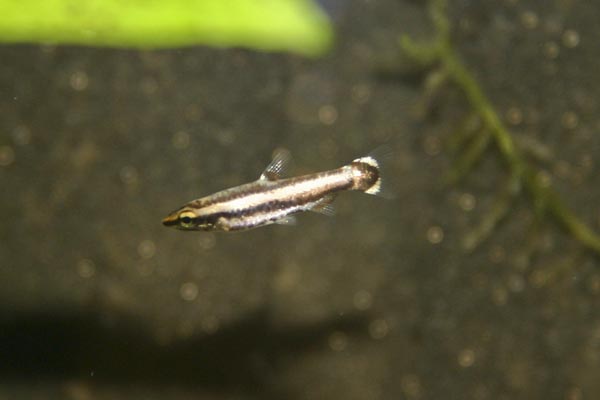
Carry out regular partial water changes with aged water to keep on top of the water quality. The adult pattern develops at about 8 weeks and the fish start to get colour shortly afterwards. By 12 weeks they are large enough to trade and by 4 months they are big enough to sell to stores.
Summary
Nannostomus mortenthaleri is a challenging little fish. If you are prepared to invest some time and resources then you will be rewarded with a stunning display of beautiful, vibrant, coral red pencilfish.
References
- Weitzman, M. and S.H. Weitzman, 2003. Lebiasinidae (Pencil fishes). p. 241-251. In R.E. Reis, S.O. Kullander and C.J. Ferraris, Jr. (eds.) Checklist of the Freshwater Fishes of South and Central America. Porto Alegre: EDIPUCRS, Brasil.
- Fishbase species summary
I like these fish!
LikeLike
Hi Graham these pictures do not do the fish justice they relay are stuning very good article John
LikeLike
Great article. Wonderful to see fry pics, and your info on sexing is very helpful.
LikeLike